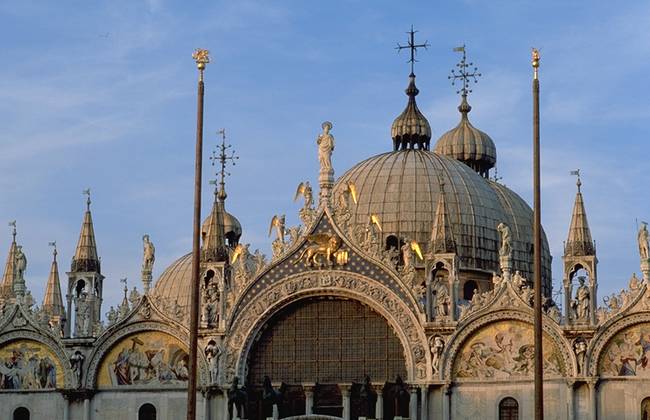Gabrieli, Canzon septimi toni

Giovanni Gabrieli was appointed principal organist at Saint Mark’s in Venice from 1585. The next year he succeeded his uncle Andrea Gabrieli as principal composer at Saint Mark’s. He held both post until his death in 1612.
Saint Mark’s exerted a strong influence on Gabrieli’s works and not just because of the prominence of the post. The basilica had some unusual architectural features, including two choir lofts on opposing sides. It was the perfect setting for antiphonal music in which a separate group of musicians would be placed in each loft and perform musical passages alternately or responsively. Gabrieli was not the first to think of this. The Venetian polychoral style includes works by Adrian Willaert, one of Gabrieli’s predecessors. And antiphonal music can be found stretching back to descriptions of music in the Temple. Some believe the Jews brought antiphonal music back with them from the Babylonian Exile.
But the antiphonal style of Venice really gained popularity under Gabrieli and spread to other parts of Europe. It also foreshadowed the development of the Baroque concertato style, of two groups of musicians playing in opposition to one another. You can compare, for example, the Handel Concerto Grosso featured sometime back.
In the featured work (probably the best known of Gabrieli’s Canzoni), the two ensembles have equal roles. One group frequently repeats a short phrase played by the other. Those phrases are sometimes distinct but frequently overlap with both groups sounding at once. Audiences liked the stereo effect.



